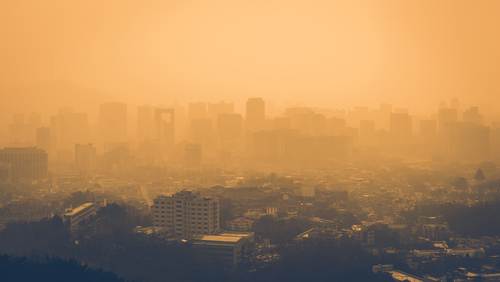

Summary
- Global climate challenges are complex. Addressing them goes beyond the environment and extends to global diplomacy and growth in developing countries.
- Much of the discourse is polarised, characterised by extremes on both sides.
- Finding solutions to climate issues requires a different approach, focusing on risk as a more resolution-driven answer to environmental challenges.
Introduction
For several decades, environmental and climate challenges have become increasingly front and centre in the public discourse, not only for the future of the planet but also for the global economy.
Recently, journalist and commentator Andrew Revkin joined Bilal Hafeez on Macro Hive Conversations to discuss a broad range of environmental themes. Revkin is one of the most respected voices in this space, having written on climate challenges for over 35 years.
This piece, the first of three, will focus on his engagement with climate themes within a historical context, how the climate issue is not just about pollution, the role the media plays in the discourse, and how looking at climate challenges through a risk lens will lead to better outcomes.
From Nuclear Winter to C02 Emissions
Revkin’s early experiences reporting on global warming started in the 1980s, during the Cold War.
Back then, the concept of nuclear winter – whereby the smoke generated from a nuclear war blocks out the sun and chills the earth, with diabolical consequences – was also driving research on climate change.
The approach academics took to studying the impact of a nuclear winter also informed the approach to studying global warming. The scientists were using the same models.
The concept of the greenhouse effect was developed around this time. There was also an increasing awareness in the 1980s of the notion of acid rain and its negative impact on the planet.
The common denominator of these climate challenges was C02 emissions. And the approach of governments, both national and international, was to regulate these emissions.
This led to legislation such as the Clean Air Act in the United States, the 1987Montreal Protocol (aka the Ozone Treaty), and the 1992 UN Framework Convention on Climate Change, upon which everything that came in the following decades sits.
What Do We Owe Developing Nations?
Revkin came to the view that although C02 emissions were a problem of pollution, the broader discussion was much bigger than that – it was a story about global diplomacy and economic development.
Within this context is the notion that it is inappropriate for developed nations to impose standards on the developing world.
As Revkin put it in the podcast: ‘What gives the global community the right to tell a country with close to a billion poor people, “You can’t have electricity”?’ He added, ‘[There is a] dynamic tension between both economic development in countries that have not yet industrialised and the sustained economic productivity in countries that already built their wealth and technology and norms around fossil fuels.’
All of the competing crosscurrents in the foregoing narrative contributed to Revkin’s conclusion that you cannot do a ‘binding targets and a timetables approach’ to the regulation of C02.
As Macro Hive’s John Tierney explores, this debate persists today. Emerging market countries have contributed little to global warming to date but are disproportionately subjected to the environmental hazards, inadequately equipped to recover from disasters, and less able to adjust to future changes. In a first step, COP27 in Egypt saw rich countries establish a fund to help their less developed neighbours.
How the Media Makes Things Worse
Today, there exists a marked polarisation in the climate discussion. While the science is clear on the negative impact of C02 emissions on the planet, the interpretations of how to deal with this vary and often conflict.
These varying approaches have led to a dichotomy, increasingly characterised by extremism on both sides.
Some claim the end times are near and that an ecological catastrophe is unavoidable and imminent. Others deny this, saying the risks are far in the future and there is plenty of time to deal with them.
Somewhere between these two extremes probably lies the truth, and Revkin says a big reason for the polarisation is the media. The media pay attention to the extremes because that makes for an interesting story.
Revkin says it is a tough time for journalism and what is required is less sensationalistic reporting about the climate challenge and more interdisciplinary, multi-community discourse. Finding common ground is critical.
One way of achieving this is by fostering more informed and effective journalism. Rather than relying on the mainstream media for environmental reporting, look to more specialised, focused sources of news, such as reporting from the Earth Journalism Network and mongobay.org.
Thinking of Climate Change as Climate Risk
The climate challenge has been around for decades, and Revkin says that a more effective way of framing the issue is to think of it as climate risk, rather than strictly as climate change. This leads to a more focused, resolution-driven approach that attaches risk to challenges.
So, when looking at environmental hazards, it is better to take a formula-based approach. For example, from a storm or flood, how many people are exposed? How much stuff is in harm’s way? Within this framework, you consider both resilience and vulnerability.
This approach aims to factor in specific risks into the climate discussion the same way the investment community incorporates risk when looking at the potential deployment of capital.
Revkin says this is a liberating way to approach climate challenges, by focusing on responsibility and solvability, in addition to devising immediate steps to be taken and longer-term responses to any given climate risk.
Conclusion
Several decades of climate challenges saw C02 emissions become a central issue. And, while reducing emissions became a major goal of global efforts to regulate climate change, the approach was fraught with difficulties relating to global diplomacy and economic advancement in the developing world.
The discourse around climate challenges today is dichotomised. Much of this is fostered by the media, according to Andrew Revkin, since extremist narratives on either side of the divide make for more compelling news stories. Better journalism is required, focusing on a more specialised approach to the subject matter.
There is also an opportunity to better address climate challenges by changing our perspectives. Rather than focusing exclusively on climate change, it is helpful to look at climate risk. The latter leads to a more targeted, solution-based approach to addressing environmental concerns.
